|
|
|
|
|
Think Outside Stowaway Bluetooth Keyboard and Mouse |
|
Join the community - in the OCAU Forums!
|
Introduction, Connectivity
The State of the Art
As computers become smaller, they also tend to become more integrated into the everyday aspects of our lives. The simplest example of this would be the humble calculator: from the room-sized "computer" of the mid-twentieth century, pocket-sized calculators became available in the 1970s and virtually omnipresent during the '80s. Today's graphing calculators dwarf the original computers in terms of processing power despite being orders of magnitude lesser in size. In fact, the major limitation to the reduction in size of computers is the problem of information input.
The very first computers used switch arrays to input data one byte at a time; flick the switch on for one, off for zero and a last switch that sends the data to a buffer. The advent of punched cards and tape allowed hundreds of instructions to be fed into a reader in minutes. Then, in the 1950s and '60s, the industry was revolutionised when the keyboard and mouse were introduced, and here it stopped.
Since then, innovation has advanced less in the direction of radical new methods of input, and more into the development and refinement of existing devices. The newest mice use LEDs and light-sensing arrays to detect movement. All mice have grown beyond the original single button interface, and so too keyboards have grown to feature extra keys supporting many new functions. Both have eschewed the use of cables for Radio Frequency (RF) communication, enabling desktops to become less cluttered and also promote design change towards the more "fashionable" end of the spectrum. All this new functionality has come at a price, though, because keyboards and mice are bigger than ever.
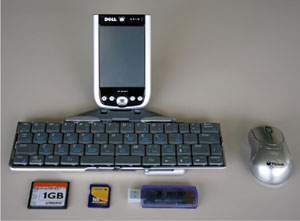
Not any more.
Smaller is Better...
Think Outside offer a number of portable devices, such as keyboards, mice & speaker systems, designed for use with other portable devices, such as PDAs, SmartPhones and iPods. Agg actually reviewed their Palm Portable Keyboard a few years ago. Conventional portable keyboards have in the past been used wirelessly via infrared, but with the wide-scale introduction of Bluetooth technology in recent years, Think Outside have responded with the Stowaway® Universal Bluetooth Keyboard and Stowaway® Travel Mouse.
Here's a size comparison of the Think Outside products with a regular Logitech PC keyboard and mouse:
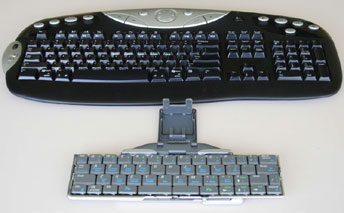 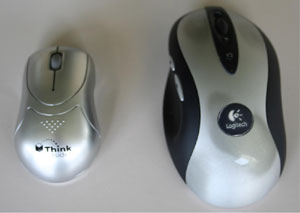
Think Outside KB: 25cm wide, 15cm deep, 1.3cm thick.
Logitech KB: 66cm wide, 23cm deep, 2.5cm thick.
Think Outside mouse: 9cm long, 5cm wide, 3cm tall
Logitech mouse: 13cm long, 7cm wide, 4cm tall
Through an ingenious mechanism involving multiple PCBs, ribbon cables, retention mechanisms, hinges and levers, the keyboard folds up to a tiny package.
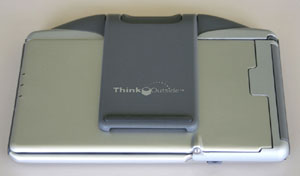 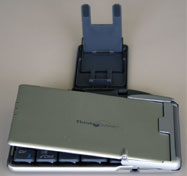 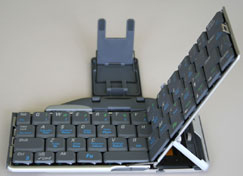
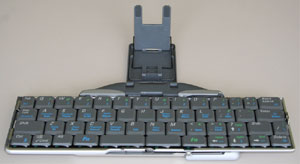
Somehow, this tiny package still manages to cram in full-sized keys; it's just that there's fewer of them. Almost every standard function the large Logitech KB can do, this smaller keyboard can also do in 51 keys, though it does help that the smaller KB has two extra function keys that allow each of the other keys to have additional functions and/or characters.
... But Wireless is Best
Connecting the keyboard to the PDA is as simple as enabling discovery (holding down ctrl - left fn - right fn buttons) and prompting the PDA to connect. There are two modes: secure and non-secure. Secure mode requires a numeric passkey to be entered into both the PDA and the keyboard, but the advantage is that the unique Bluetooth device id assigned to the keyboard is stored on the PDA and future connections are automatic upon discovery. Connecting in non-secure mode requires the user to go through the full connection wizard for each new keyboard session.
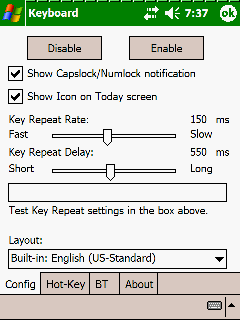 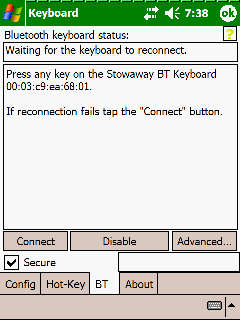
Fig 1: Enabling the keyboard
Fig 2: Connecting to the keyboard via Bluetooth
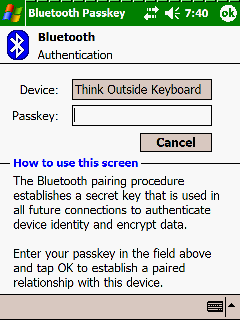 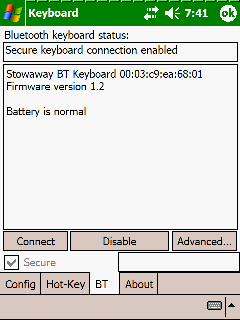
Fig 3: Keyboard connected; setting a passkey
Fig 4: Secure connection established
|
|
Advertisement:
All original content copyright James Rolfe.
All rights reserved. No reproduction allowed without written permission.
Interested in advertising on OCAU? Contact us for info.
|

|


